Origins (1957-1961)
In 1957, the Brooklyn Dodgers and New York Giants abandoned New York for California, leaving the largest city in the United States without a National League franchise. Two years later, on July 27, 1959, attorney William Shea announced the formation of a third major baseball league, the Continental League. After a contentious year, in 1960, Shea and the other Continental League organizers reached a deal with the established major leagues. In exchange for abandoning the new league, four new expansion franchises were created — two in each league. New York City received one of the National League teams with Joan Whitney Payson and her husband Charles Shipman Payson, former minority owners of the Giants, as the principal owners, along with George Herbert Walker, Jr. (uncle of President George H. W. Bush), who served as vice president and treasurer until 1977.[1] Former Giants director M. Donald Grant, the only member of the board to oppose the Giants' move West, became chairman of the board.
The new team required a new name and many were suggested. Among the finalists were "Bees", "Burros", "Continentals", "Skyscrapers", "Jets", as well as the eventual runner-up, "Skyliners". Although Payson had admitted a preference for "Meadowlarks," the owners ultimately selected "Mets" because it was closely related to the club's already-existing corporate name "New York Metropolitan Baseball Club, Inc.", it hearkened back to "Metropolitans", a historically significant name used by an earlier New York team in the American Association from 1883 to 1887, and because its brevity would naturally fit in newspaper headlines. The name was received with broad approval among fans and press.
In 1957, the Brooklyn Dodgers and New York Giants abandoned New York for California, leaving the largest city in the United States without a National League franchise. Two years later, on July 27, 1959, attorney William Shea announced the formation of a third major baseball league, the Continental League. After a contentious year, in 1960, Shea and the other Continental League organizers reached a deal with the established major leagues. In exchange for abandoning the new league, four new expansion franchises were created — two in each league. New York City received one of the National League teams with Joan Whitney Payson and her husband Charles Shipman Payson, former minority owners of the Giants, as the principal owners, along with George Herbert Walker, Jr. (uncle of President George H. W. Bush), who served as vice president and treasurer until 1977.[1] Former Giants director M. Donald Grant, the only member of the board to oppose the Giants' move West, became chairman of the board.
The new team required a new name and many were suggested. Among the finalists were "Bees", "Burros", "Continentals", "Skyscrapers", "Jets", as well as the eventual runner-up, "Skyliners". Although Payson had admitted a preference for "Meadowlarks," the owners ultimately selected "Mets" because it was closely related to the club's already-existing corporate name "New York Metropolitan Baseball Club, Inc.", it hearkened back to "Metropolitans", a historically significant name used by an earlier New York team in the American Association from 1883 to 1887, and because its brevity would naturally fit in newspaper headlines. The name was received with broad approval among fans and press.
Lovable losers (1962-1968)
In October, 1961, the National League held an expansion draft to stock the rosters of the Mets and the Houston Colt .45s with players from other clubs. 22 players were selected by the Mets, including some with notable previous success such as Roger Craig, Al Jackson, Frank Thomas and Richie Ashburn. But rather than select talented young players with future potential, Mets management preferred to sign faded stars of the Dodgers, Giants and Yankees to appeal to fans' nostalgia. Legendary Yankees manager Casey Stengel was hired out of retirement to lead the team, but his managerial acumen wasn't enough to overcome the severe deficiency of talent among the players. The Mets began their on-field play in 1962, losing their first nine games en route to a 40-120 record. Their .250 winning percentage was the third worst by any major league team since the beginning of the 20th Century. Throughout major league history only the 1899 Cleveland Spiders (20-134) lost more games in a single season than the 1962 Mets. It wasn't until 2003 that the record would be threatened by the Detroit Tigers, who finished the season at 43-119. The ineptness of the Mets during their first year is chronicled in colorful fashion in the 1963 book Can't Anybody Here Play This Game?, written by New York columnist Jimmy Breslin.
Beloved by New York fans despite their losing ways — or perhaps because of them — the Mets of the early 1960s became famous for their ineptitude. Journeyman players like the ironically nicknamed "Marvelous Marv" Throneberry became icons of athletic incompetence. Ex-Dodger and Giant pitcher Billy Loes, who was selected by the Mets in the 1961 expansion draft, was credited with this ungrammatical quotation: "The Mets is a good thing. They give everybody jobs. Just like the WPA." Even the Mets proved to have standards, however. In 1962, Cleveland Indians catcher Harry Chiti was purchased by the Mets for a player to be named later in the season. That "player to be named later" ended up being Harry Chiti. Chiti is the only player ever to be sent back to his original team in a trade in Major League history.
In 1964, the Mets, who played their first two seasons in the old Polo Grounds, the former home of the Giants, moved to the newly constructed Shea Stadium, a 55,300-seat multipurpose facility built in the Flushing neighborhood of the Borough of Queens, adjacent to the site of the 1939 and 1964 New York World's Fairs. One high point of Shea Stadium's first season came on Father's Day, when Philadelphia Phillies pitcher Jim Bunning threw a perfect game against the Mets, the first in the National League since 1880. For perhaps the only time in the stadium's history, the Shea faithful found themselves rooting for the visitors, caught up in the rare achievement, and roaring for Bunning on every pitch in the ninth inning. His strikeout of John Stephenson capped the performance. Another high point was Shea Stadium's hosting of the 1964 All-Star Game.
The Mets' image as lovable losers was wearing a little thin as the decade progressed, but things began to change slowly in the late '60s. The Mets acquired top pitching prospect Tom Seaver in a lottery and he became the league's Rookie of the Year in 1967, despite the team finishing last again. Even though the Mets remained in last place, Tom Seaver was a sign of good fortune to come. He was originally signed by the Atlanta Braves in February 1966 out of the University of Southern California, but his contract was voided by Commissioner William D. Eckert on the basis that the USC season had already started when Seaver signed. In order to resolve this issue, the Mets, Indians, and Phillies were all placed in a hat since they were the only teams willing to match the Braves offer, and the Mets were fortunate enough to win the drawing. In addition to Seaver, two other young players were catcher Jerry Grote and shortstop Bud Harrelson. This trio of youth formed a new, determined clubhouse nucleus that had no interest in losing, lovably or otherwise. By the 1968 season, Wes Westrum would be replaced as manager by Gil Hodges. Pitcher Jerry Koosman joined the staff and had a spectacular rookie season in 1968, winning 19 games. Left fielder Cleon Jones developed as a batter and exciting center fielder Tommie Agee came over in a trade. But although much improved, the 1968 team still finished the season in 9th place.
In October, 1961, the National League held an expansion draft to stock the rosters of the Mets and the Houston Colt .45s with players from other clubs. 22 players were selected by the Mets, including some with notable previous success such as Roger Craig, Al Jackson, Frank Thomas and Richie Ashburn. But rather than select talented young players with future potential, Mets management preferred to sign faded stars of the Dodgers, Giants and Yankees to appeal to fans' nostalgia. Legendary Yankees manager Casey Stengel was hired out of retirement to lead the team, but his managerial acumen wasn't enough to overcome the severe deficiency of talent among the players. The Mets began their on-field play in 1962, losing their first nine games en route to a 40-120 record. Their .250 winning percentage was the third worst by any major league team since the beginning of the 20th Century. Throughout major league history only the 1899 Cleveland Spiders (20-134) lost more games in a single season than the 1962 Mets. It wasn't until 2003 that the record would be threatened by the Detroit Tigers, who finished the season at 43-119. The ineptness of the Mets during their first year is chronicled in colorful fashion in the 1963 book Can't Anybody Here Play This Game?, written by New York columnist Jimmy Breslin.
Beloved by New York fans despite their losing ways — or perhaps because of them — the Mets of the early 1960s became famous for their ineptitude. Journeyman players like the ironically nicknamed "Marvelous Marv" Throneberry became icons of athletic incompetence. Ex-Dodger and Giant pitcher Billy Loes, who was selected by the Mets in the 1961 expansion draft, was credited with this ungrammatical quotation: "The Mets is a good thing. They give everybody jobs. Just like the WPA." Even the Mets proved to have standards, however. In 1962, Cleveland Indians catcher Harry Chiti was purchased by the Mets for a player to be named later in the season. That "player to be named later" ended up being Harry Chiti. Chiti is the only player ever to be sent back to his original team in a trade in Major League history.
In 1964, the Mets, who played their first two seasons in the old Polo Grounds, the former home of the Giants, moved to the newly constructed Shea Stadium, a 55,300-seat multipurpose facility built in the Flushing neighborhood of the Borough of Queens, adjacent to the site of the 1939 and 1964 New York World's Fairs. One high point of Shea Stadium's first season came on Father's Day, when Philadelphia Phillies pitcher Jim Bunning threw a perfect game against the Mets, the first in the National League since 1880. For perhaps the only time in the stadium's history, the Shea faithful found themselves rooting for the visitors, caught up in the rare achievement, and roaring for Bunning on every pitch in the ninth inning. His strikeout of John Stephenson capped the performance. Another high point was Shea Stadium's hosting of the 1964 All-Star Game.
The Mets' image as lovable losers was wearing a little thin as the decade progressed, but things began to change slowly in the late '60s. The Mets acquired top pitching prospect Tom Seaver in a lottery and he became the league's Rookie of the Year in 1967, despite the team finishing last again. Even though the Mets remained in last place, Tom Seaver was a sign of good fortune to come. He was originally signed by the Atlanta Braves in February 1966 out of the University of Southern California, but his contract was voided by Commissioner William D. Eckert on the basis that the USC season had already started when Seaver signed. In order to resolve this issue, the Mets, Indians, and Phillies were all placed in a hat since they were the only teams willing to match the Braves offer, and the Mets were fortunate enough to win the drawing. In addition to Seaver, two other young players were catcher Jerry Grote and shortstop Bud Harrelson. This trio of youth formed a new, determined clubhouse nucleus that had no interest in losing, lovably or otherwise. By the 1968 season, Wes Westrum would be replaced as manager by Gil Hodges. Pitcher Jerry Koosman joined the staff and had a spectacular rookie season in 1968, winning 19 games. Left fielder Cleon Jones developed as a batter and exciting center fielder Tommie Agee came over in a trade. But although much improved, the 1968 team still finished the season in 9th place.
"The Miracle Mets" (1969)
The Mets began the 1969 season in a mediocre way; an opening day loss of 11-10 to the expansion Expos was followed by a record of 21-23 through the end of May. By mid-August, the favored Chicago Cubs seemed safely on their way to winning the pennant in the newly-formed National League East Division while the Mets sat in third place, ten games behind. On August 14, the Cubs led the Mets by 9 1/2 games. But Chicago went 8-17 in September, while the Mets, with outstanding pitching from their young staff, piled up victory after victory, winning 38 of their last 49 games and finishing in first place with a 100-62 record for the season, their first winning year ever, a full eight games over the Cubs. The Mets finished with a team ERA of 2.99, and a league leading 28 shutouts thrown. Tom Seaver led the way with a 25-7 record, with lefty Jerry Koosman behind him at 17-9 record, while Cleon Jones finished with a .340 batting average. Seaver's best game occurred on July 9, at Shea Stadium, where he came within two outs of a perfect game, but gave up a one-out, ninth-inning single to the Cubs' Jimmy Qualls for the only hit in the Mets' 4-0 victory.
The "Amazin' Mets" or "Miracle Mets", as they became known by the press, went on to win a three-game sweep of the strong Atlanta Braves, led by legend Henry "Hank" Aaron, in the very first National League Championship Series. The Mets were still considered underdogs in this series despite the fact that they had a better record than the Braves.
The Mets were given very little chance in the 1969 World Series, facing a powerful Baltimore Orioles team that had gone 109-53 in the regular season and included future Hall of Famers Frank Robinson, Brooks Robinson and Jim Palmer as well as future Mets manager Davey Johnson, who ironically would make the final out of the Series. Before the series began, pundits predicted Tom Seaver might win the opening game, but that the Mets would have trouble winning again in the World Series. As it turned out, just the opposite occurred; Seaver was roughed up, allowing four runs in the opener, which he lost -- but the Mets' pitching shut down the Orioles after that, holding them to just five runs over the next four games, to win the World Series of 1969 4 games to 1. Seaver got his revenge in game four, pitching all 10 innings of a 2-1 victory.
This rags-to-riches story is regarded as one of baseball history's great turnarounds, giving hope to underdogs, also-rans and lost causes everywhere. Soon after the season ended, Tom Seaver lent his name to a commercial saying "If the Mets can win the World Series, America can get out of Vietnam."
The Mets began the 1969 season in a mediocre way; an opening day loss of 11-10 to the expansion Expos was followed by a record of 21-23 through the end of May. By mid-August, the favored Chicago Cubs seemed safely on their way to winning the pennant in the newly-formed National League East Division while the Mets sat in third place, ten games behind. On August 14, the Cubs led the Mets by 9 1/2 games. But Chicago went 8-17 in September, while the Mets, with outstanding pitching from their young staff, piled up victory after victory, winning 38 of their last 49 games and finishing in first place with a 100-62 record for the season, their first winning year ever, a full eight games over the Cubs. The Mets finished with a team ERA of 2.99, and a league leading 28 shutouts thrown. Tom Seaver led the way with a 25-7 record, with lefty Jerry Koosman behind him at 17-9 record, while Cleon Jones finished with a .340 batting average. Seaver's best game occurred on July 9, at Shea Stadium, where he came within two outs of a perfect game, but gave up a one-out, ninth-inning single to the Cubs' Jimmy Qualls for the only hit in the Mets' 4-0 victory.
The "Amazin' Mets" or "Miracle Mets", as they became known by the press, went on to win a three-game sweep of the strong Atlanta Braves, led by legend Henry "Hank" Aaron, in the very first National League Championship Series. The Mets were still considered underdogs in this series despite the fact that they had a better record than the Braves.
The Mets were given very little chance in the 1969 World Series, facing a powerful Baltimore Orioles team that had gone 109-53 in the regular season and included future Hall of Famers Frank Robinson, Brooks Robinson and Jim Palmer as well as future Mets manager Davey Johnson, who ironically would make the final out of the Series. Before the series began, pundits predicted Tom Seaver might win the opening game, but that the Mets would have trouble winning again in the World Series. As it turned out, just the opposite occurred; Seaver was roughed up, allowing four runs in the opener, which he lost -- but the Mets' pitching shut down the Orioles after that, holding them to just five runs over the next four games, to win the World Series of 1969 4 games to 1. Seaver got his revenge in game four, pitching all 10 innings of a 2-1 victory.
This rags-to-riches story is regarded as one of baseball history's great turnarounds, giving hope to underdogs, also-rans and lost causes everywhere. Soon after the season ended, Tom Seaver lent his name to a commercial saying "If the Mets can win the World Series, America can get out of Vietnam."
Cashen Rebuilds (1980-1985)
In January, 1980 the Payson heirs sold the Mets franchise to the Doubleday publishing company for $21.1 million. Nelson Doubleday Jr. was named chairman of the board while minority shareholder Fred Wilpon took the role of club president. Wilpon quickly hired longtime Baltimore Orioles executive Frank Cashen as general manager to begin the process of rebuilding the Mets.
Cashen's positive impact on the organization took some time to be felt at the major league level. He began by selecting slugging high school phenomenon Darryl Strawberry as the number one overall pick in the 1980 amateur draft. Two years later, hard-throwing hurler Dwight Gooden was taken as the fifth overall selection in the 1982 draft. The pair rose quickly through the minors, winning successive Rookie of the Year awards (Strawberry in 1983, Gooden in 1984). Cashen's mid-season 1983 trade for former MVP Keith Hernandez helped spark the Mets' return to competitive contention. In 1984, new manager Davey Johnson was promoted from the helm of the AAA Tidewater Tides and led the Mets to a 90-72 record, their first winning season since 1976. In 1985 the Mets acquired all-star catcher Gary Carter from the Montreal Expos and won 98 games, but lost the division title to the St. Louis Cardinals in the final days of the season in a memorable series. (The Mets began the series three games behind St Louis and won the first two, but faltered in the third game, allowing St Louis to remain in first place).
In January, 1980 the Payson heirs sold the Mets franchise to the Doubleday publishing company for $21.1 million. Nelson Doubleday Jr. was named chairman of the board while minority shareholder Fred Wilpon took the role of club president. Wilpon quickly hired longtime Baltimore Orioles executive Frank Cashen as general manager to begin the process of rebuilding the Mets.
Cashen's positive impact on the organization took some time to be felt at the major league level. He began by selecting slugging high school phenomenon Darryl Strawberry as the number one overall pick in the 1980 amateur draft. Two years later, hard-throwing hurler Dwight Gooden was taken as the fifth overall selection in the 1982 draft. The pair rose quickly through the minors, winning successive Rookie of the Year awards (Strawberry in 1983, Gooden in 1984). Cashen's mid-season 1983 trade for former MVP Keith Hernandez helped spark the Mets' return to competitive contention. In 1984, new manager Davey Johnson was promoted from the helm of the AAA Tidewater Tides and led the Mets to a 90-72 record, their first winning season since 1976. In 1985 the Mets acquired all-star catcher Gary Carter from the Montreal Expos and won 98 games, but lost the division title to the St. Louis Cardinals in the final days of the season in a memorable series. (The Mets began the series three games behind St Louis and won the first two, but faltered in the third game, allowing St Louis to remain in first place).
1969 • 1986
World Series Titles (2)
1957 - 1985 (Part 1 of 2)
"You Gotta Believe!" and the Midnight Massacre (1970-1979)
The Miracle Mets magic wore off as the 1970s began. In subsequent years, Mets pitchers generally excelled but received lackluster support from the hitters with mediocre finishes the result. Efforts to improve the offense backfired with blunders such as trading Amos Otis for troubled infielder Joe Foy after the 1969 season as well as young pitcher Nolan Ryan for infielder Jim Fregosi after the 1971 season. Once out of the glaring New York spotlight, Ryan became one of the best pitchers in history, spending 22 more years in the majors and entering the Baseball Hall of Fame in 1999. Fregosi battled injuries and played just 146 games for the Mets over a season and a half. Meanwhile Otis became a superstar with the Kansas City Royals while Foy lasted only one season in New York.
The team was thrown into confusion and shock prior to the 1972 season, when Manager Gil Hodges, who had led the team to the World Series victory in 1969, suffered a sudden heart attack at the end of spring training and died. Coach Yogi Berra succeeded Hodges.
Berra's Mets found themselves in last place with a 61-71 record at the end of August, 1973 but they recovered behind relief pitcher Tug McGraw and his "Ya gotta believe!" rallying cry (the team has since trademarked the phrase), winning 21 of their last 29 games. Berra also coined his most famous Yogiism that year: "It ain't over til it's over!" In a peculiar circumstance, their final record of only 82-79 was good enough to win the division while five better teams in the Majors missed the postseason. Despite the worst winning percentage ever by a division winner (until the 2005 San Diego Padres), the Mets then shocked the heavily-favored Cincinnati Reds "Big Red Machine" in the NLCS. Their record remains the worst of any pennant-winning team but they managed to push the A.L. champion Oakland A's to a seventh game. Their near-miracle season ended with a loss to Ken Holtzman in the final contest.
As the 1975 season ended, owner Joan Whitney Payson died. Her husband Charles delegated ownership authority to his daughters, while board chairman M. Donald Grant managed the baseball operations. Payson had been the driving force behind the Mets but her survivors did not share her enthusiasm for investing in the future of the team. Contract disputes with star pitcher Tom Seaver and slugger Dave Kingman erupted in 1977. Both players were traded on June 15, the trading deadline, in what New York tabloids dubbed "The Midnight Massacre." The Mets received six players in the two deals, but none had any lasting impact. Attendance fell, to the point where Shea Stadium was nicknamed "Grant's Tomb."
The team finished in last place yet again and Grant was relieved of his duties in 1978. That the crosstown Yankees had begun reaching the postseason again in 1976 further eroded the Mets' fan base. The Mets continued to struggle, and did not become a competitive team again until the mid-1980s, marking the first time that both teams were competitive, both on the field and at the box office.
The Miracle Mets magic wore off as the 1970s began. In subsequent years, Mets pitchers generally excelled but received lackluster support from the hitters with mediocre finishes the result. Efforts to improve the offense backfired with blunders such as trading Amos Otis for troubled infielder Joe Foy after the 1969 season as well as young pitcher Nolan Ryan for infielder Jim Fregosi after the 1971 season. Once out of the glaring New York spotlight, Ryan became one of the best pitchers in history, spending 22 more years in the majors and entering the Baseball Hall of Fame in 1999. Fregosi battled injuries and played just 146 games for the Mets over a season and a half. Meanwhile Otis became a superstar with the Kansas City Royals while Foy lasted only one season in New York.
The team was thrown into confusion and shock prior to the 1972 season, when Manager Gil Hodges, who had led the team to the World Series victory in 1969, suffered a sudden heart attack at the end of spring training and died. Coach Yogi Berra succeeded Hodges.
Berra's Mets found themselves in last place with a 61-71 record at the end of August, 1973 but they recovered behind relief pitcher Tug McGraw and his "Ya gotta believe!" rallying cry (the team has since trademarked the phrase), winning 21 of their last 29 games. Berra also coined his most famous Yogiism that year: "It ain't over til it's over!" In a peculiar circumstance, their final record of only 82-79 was good enough to win the division while five better teams in the Majors missed the postseason. Despite the worst winning percentage ever by a division winner (until the 2005 San Diego Padres), the Mets then shocked the heavily-favored Cincinnati Reds "Big Red Machine" in the NLCS. Their record remains the worst of any pennant-winning team but they managed to push the A.L. champion Oakland A's to a seventh game. Their near-miracle season ended with a loss to Ken Holtzman in the final contest.
As the 1975 season ended, owner Joan Whitney Payson died. Her husband Charles delegated ownership authority to his daughters, while board chairman M. Donald Grant managed the baseball operations. Payson had been the driving force behind the Mets but her survivors did not share her enthusiasm for investing in the future of the team. Contract disputes with star pitcher Tom Seaver and slugger Dave Kingman erupted in 1977. Both players were traded on June 15, the trading deadline, in what New York tabloids dubbed "The Midnight Massacre." The Mets received six players in the two deals, but none had any lasting impact. Attendance fell, to the point where Shea Stadium was nicknamed "Grant's Tomb."
The team finished in last place yet again and Grant was relieved of his duties in 1978. That the crosstown Yankees had begun reaching the postseason again in 1976 further eroded the Mets' fan base. The Mets continued to struggle, and did not become a competitive team again until the mid-1980s, marking the first time that both teams were competitive, both on the field and at the box office.
www.TNYM.net





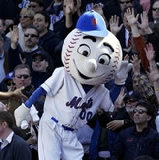



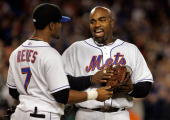
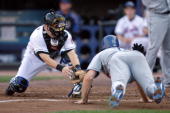
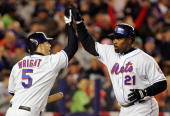
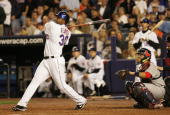
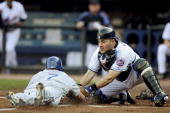
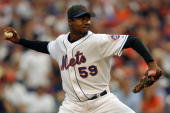
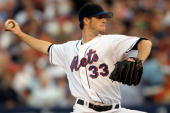
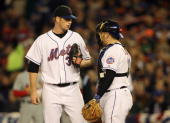
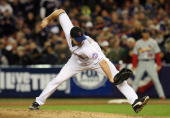
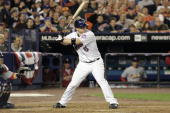
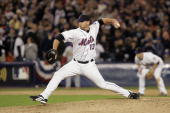
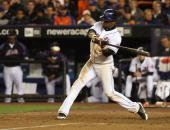
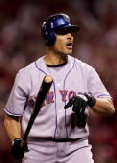
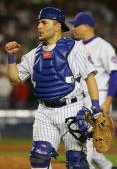
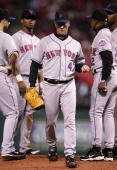
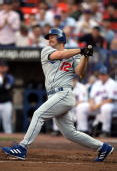

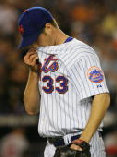
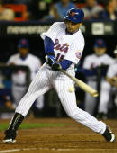
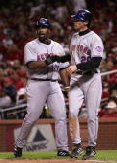
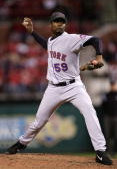
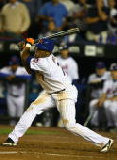
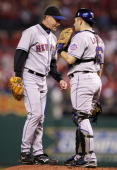
Visit Our Sponsors